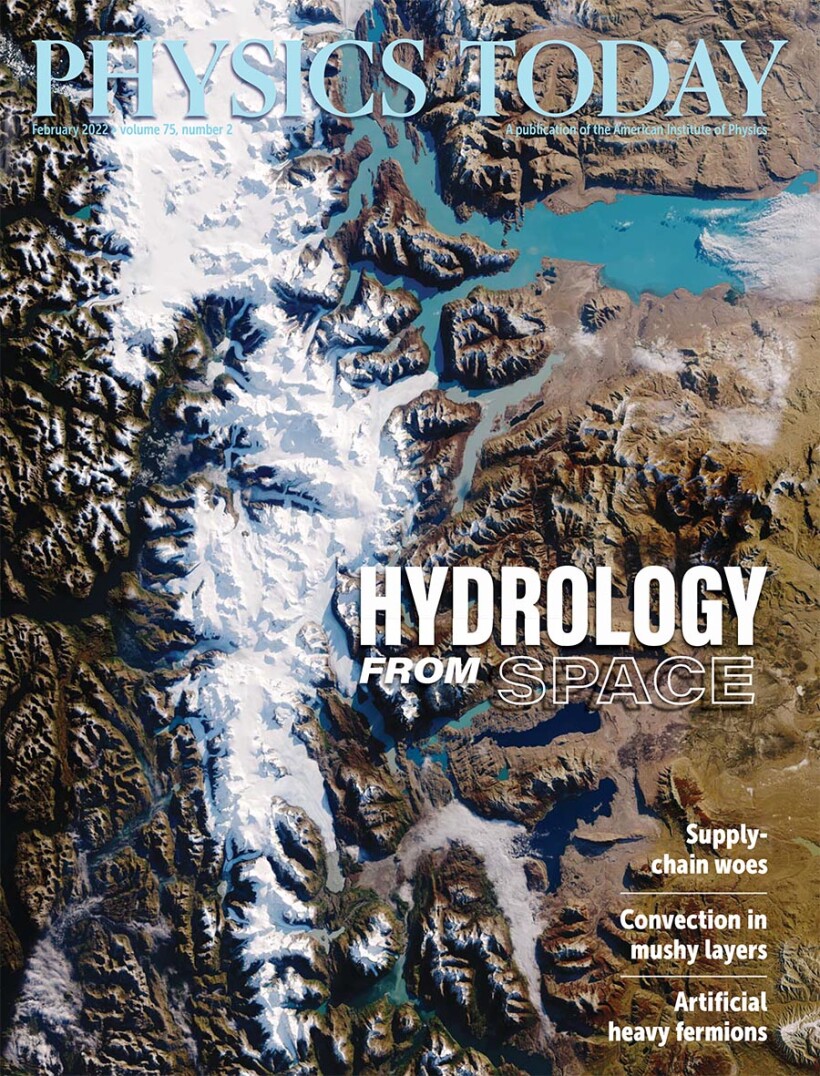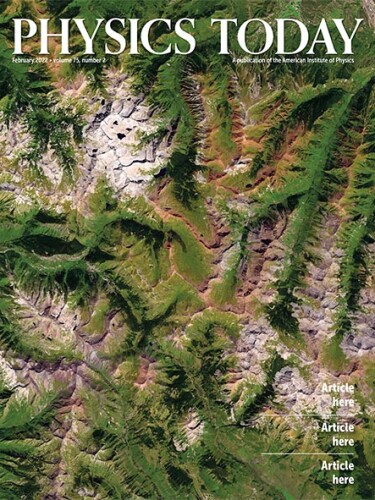Behind the Cover: February 2022

The final version of this month’s cover
Each month, Physics Today editors explore the research and design choices that inspired the latest cover of the magazine.
The second issue of the year includes a feature article
Chew is a project scientist at the University Corporation for Atmospheric Research in Boulder, Colorado. The facility’s main set of buildings is situated beneath cliffs on the eastern flank of the Rocky Mountains’ Front Range. A satellite image of the Front Range, with snow-covered mountains giving way to flat, semiarid prairie, struck me as a suitable and visually dramatic image for the February cover.

An early draft of the February cover
The magazine’s art director, Donna Padian, duly sought images of the Colorado Rockies; one of them is shown to the right. Padian and I liked it, but we thought we could do better. I realized that one of the strengths of using GPS for hydrology is its ability to provide a global view. Freed from restricting her search to Colorado, Padian found cover candidates from Pakistan and South America.
The image Padian and I chose for the final cover shows the Southern Patagonian Ice Field, which straddles the border between Chile and Argentina. It was assembled as a mosaic from images acquired by the Operational Land Imager on Landsat 8 over three cloud-free days in 2016.
For the Physics Today logotype, Padian chose a pale blue—pale, because the color needed to be light enough to be readable against the dark mountain background; blue, to resonate with the blue lake water.
The cover line uses two styles in the Acumin font family: wide black and extra condensed. Asked why she chose them, Padian replied, “I wanted a chunky, modern sans serif font with a variety of weights that would pop out of the image and allow me to use the outline [of the letters] for ‘space’ with a subtle shadow that reached toward Earth.”
Acumin was designed by Adobe’s principal type designer, Robert Slimbach. Released in 2015, it now has 90 different styles.
Charles Day is the editor-in-chief of Physics Today.